Acute and chronic effects of ferret odor exposure in Sprague-Dawley rats
- PMID: 18573530
- PMCID: PMC2575371
- DOI: 10.1016/j.neubiorev.2008.05.014
Acute and chronic effects of ferret odor exposure in Sprague-Dawley rats
Abstract
This manuscript describes several behavioral and functional studies evaluating the capacity of ferret odors to elicit a number of acute and long-term responses in male Sprague-Dawley rats. Acute presentation elicits multiple responses, suggesting that ferret odor, likely from skin gland secretions, provides an anxiogenic-like stimulus in this strain of rats. Compared to cat odor, however, ferret odor did not produce rapid fear conditioning, a result perhaps attributable to methodological factors. Inactivation of the olfactory system and medial nucleus of the amygdala, combined with induction of the immediate-early gene c-fos, suggest the necessity of the accessory olfactory system in mediating the effects of ferret odor. Repeated exposures to ferret odor produce variable habituation of neuroendocrine and behavioral responses, perhaps indicative of the lack of control over the exact individual origin or concentration of ferret odor. Ferret odor induces rapid and long-term body weight regulation, thymic involution, adrenal hyperplasia and facilitation of the neuroendocrine response to additional challenges. It is argued that the use of such odors is exquisitely suited to investigate the brain regions coordinating anxiety-like responses and the long-term changes elicited by such stimuli.
Figures

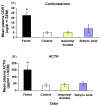
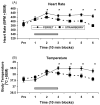
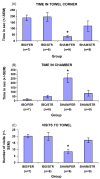

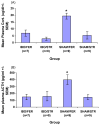
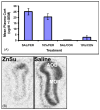

References
-
- Adamec R, Head D, Blundell J, Burton P, Berton O. Lasting anxiogenic effects of feline predator stress in mice: sex differences in vulnerability to stress and predicting severity of anxiogenic response from the stress experience. Physiol Behav. 2006;88(1–2):12–29. - PubMed
-
- Adamec R, Kent P, Anisman H, Shallow T, Merali Z. Neural plasticity, neuropeptides and anxiety in animals—implications for understanding and treating affective disorder following traumatic stress in humans. Neurosci Biobehav Rev. 1998;23(2):301–318. - PubMed
-
- Adamec R, Muir C, Grimes M, Pearcey K. Involvement of noradrenergic and corticoid receptors in the consolidation of the lasting anxiogenic effects of predator stress. Behav Brain Res. 2007;179(2):192–207. - PubMed
-
- Adamec RE, Blundell J, Burton P. Neural circuit changes mediating lasting brain and behavioral response to predator stress. Neurosci Biobehav Rev. 2005;29(8):1225–1241. - PubMed
-
- Adamec RE, Burton P, Shallow T, Budgell J. NMDA receptors mediate lasting increases in anxiety-like behavior produced by the stress of predator exposure—implications for anxiety associated with posttraumatic stress disorder. Physiol Behav. 1999;65(4–5):723–737. - PubMed
Publication types
MeSH terms
Substances
Grants and funding
LinkOut - more resources
Full Text Sources
Miscellaneous

